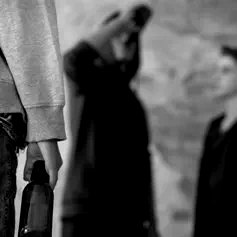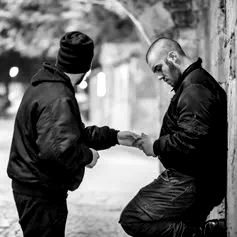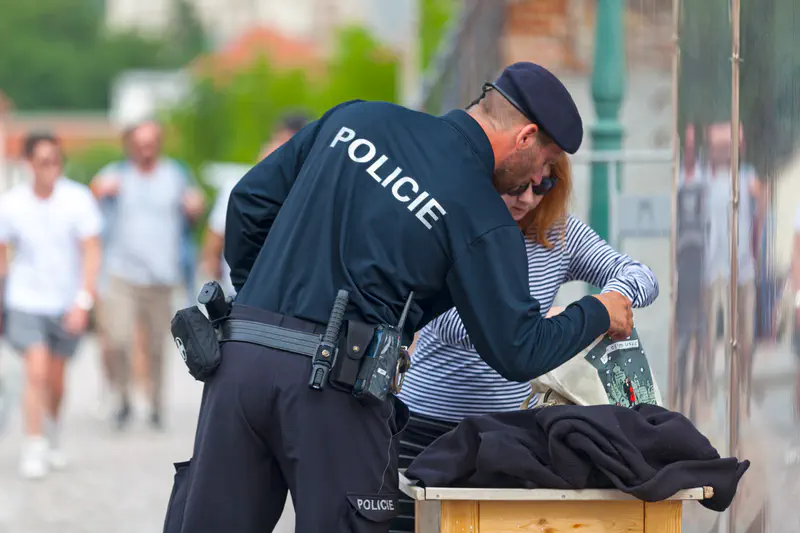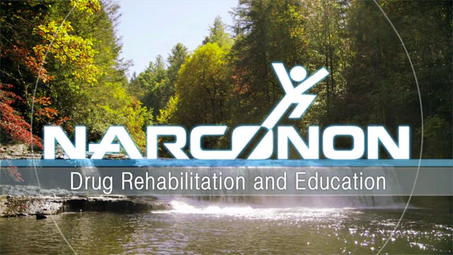The Czech Republic’s Heavy Burden of Drug and Alcohol Abuse

When you compare the profiles of drug use in Czechia to that of other EU countries, there are some breathtaking differences.1 Consider these examples:

1. A comparison of men who use specific drugs to women who use those drugs normally shows that two to four times as many men use those drugs as women. But in Czechia, far more young adult women use cocaine and methamphetamine than men.
- Cocaine: 0.5% of women used cocaine in the last year compared to 0% of young adult men.
- Amphetamines: 1% of young adult women used amphetamines compared to 0.4% of young adult men.
- But if you examine the number of people going to rehab for these drugs, it’s far more men than women which is the typical pattern.

2. According to an annual survey of 15- and 16-year-old students, far more students have consumed alcohol in the last 30 days compared to the EU average (nearly 70% compared to nearly 50%). Far more of these students also reported lifetime use of cannabis and tranquilizers or sedatives without a prescription.
- Cannabis: 37% in Czechia compared with an EU average of 15%
- Tranquilizers or sedatives: 16% compared to 6%

3. In Czechia, amphetamines are responsible for 50% of the arrivals to drug treatment, a pattern seen in no other EU country. In neighboring Germany, the figure is only 15%.
4. In a country of 6.9 million citizens, the syringe distribution program handed out 6.4 million needles. There are only an estimated 13,000 high-risk opioid users, so the chances are good that many of these needles went to those injecting some form of amphetamine.
Cannabis
In second place after amphetamines for sending people to treatment is cannabis at 24% of treatment arrivals. Compared to other EU countries, Czechia has one of the highest rates of cannabis use among young adults. More than 19% of young adults (15 to 34) use cannabis each year, putting Czechia in third place among EU countries. Among young men, one in four uses cannabis each year, but only about one in eight women. As is typical, the greatest use occurs in those ages 15 to 24.
Domestic cannabis cultivation takes place in many small-scale indoor cultivation sites, often organized by Vietnamese crime groups and run by Czech citizens. These products are mostly for the domestic market, but some are exported.
Amphetamines
Along with more than twice as many women using the drug as men, the most common age ranges during which this drug is used are 25 to 34 (nearly 1% of this group) and 15 to 24 (half a percent).1
The use of home-made methamphetamine (referred to as pervitin) is the main high-risk drug in the country. The European Monitoring Centre for Drugs and Drug Addiction estimated that there are 34,700 methamphetamine users compared to approximately 13,000 heroin users. Methamphetamine is often used in combination with other drugs, as well.
A wastewater analysis project measures the quantity of residual drugs remaining in wastewater in dozens of EU sites.2 The top two cities showing methamphetamine residues by a huge margin are both in Czechia.
The wastewater analysis calculates how many milligrams would have had to be used per 1000 people each day to result in the amount of residue in the water. For Prague, the number was 727 mg per day and for Ostrava, it was 601 mg. The next-closest city was Chemnitz in Germany at 276 mg.
While amphetamines send the most people to rehab, this number has been dropping since 2015. At that time, approximately 3,500 people entered rehab for the first time to get help for amphetamine addiction but by 2017, this number had dropped to 933. Another 1,000 people returned to rehab to give sobriety another try.
Other Stimulants
In addition to methamphetamine, small quantities of cocaine are used, as well as significant amounts of MDMA. Cocaine is trafficked in by West African criminals, coming in through Belgium, the Netherlands and Spain.

MDMA is not manufactured in the country but rather comes from the Netherlands by way of Germany. While Czechia does not use nearly as much as the source country, it has one of the higher rates of use among EU countries.
Opioids
Despite Czechia’s being on the Balkan route (Afghanistan to Northern Europe) for heroin smuggling, heroin only sends 11% of those arriving at rehab. In fact, in recent years, shipments of heroin have shifted from the Balkan route to the Southern Caucasus route (Iran-Armenia-Azerbaijan-Georgia-Ukraine). Seizures on this route have recently also turned up buprenorphine tablets, fentanyl patches and morphine-based medications.
The number of people going to rehab for the first time for heroin addiction has been dropping dramatically since 2009. At that time, nearly 500 people went to treatment, but by 2017, this number had dropped to about 100. At the same time, another 340 returned to rehab for another try.
The main opioid of choice of high-risk users is the prescription drug buprenorphine, although there is a growing misuse of other opioid-based medications.
An opioid is present in 64% of drug-induced deaths, although this does not necessarily mean that the opioid was what killed the person.
Drug-Related Deaths
Czechia has an unusual configuration for age distribution of drug-related deaths.1 More people ages 30 to 34 succumb to drugs, but most other age groups are generally near the EU average until you get to the age group over-65. The EU average for deaths in this age group is 5%. But in Czechia, more than 15% of drug-related deaths are in this group.
Alcohol
According to the World Health Organization, Czechs drink significantly more alcohol than Europeans in other countries.3 More than half the alcohol consumed is beer, with one-quarter being spirits.
Not surprisingly, men are much bigger drinkers than women. Six out of ten men have indulged in an episode of heavy drinking in the past month, but only one in four women have done so. Both numbers are significantly higher than the EU average.
Among young Czechs, heavy drinking is very common in those aged 15 to 19. More than six out of ten young men go out drinking heavily. But only one out of four young women do.
Considering the group of men who drink, they down a heavy burden of alcohol: nearly 27 liters of pure alcohol per year. That’s more than a half-liter of pure alcohol each week. Women who drink consume far less: fewer than 10 liters a year.
The World Health Organization states that Czechia has one of the highest rates of alcohol consumption in the world.4 Comparing all Czechs to the EU average, Czechs drink an average of 14.4 liters of pure alcohol each year, compared to less than 10 liters for the average EU citizen. More than 6,000 people are estimated to die each year in Czechia from alcohol-related causes.
One in 20 male Czechs is estimated to be dependent on alcohol (5%).5 Less than 1% of women are dependent.
Czechia’s Treatment History
- In 1963, 95% of those in drug treatment programs were male.6 By 1991, this percentage had dropped to 79%
- Between 1993 and 2008, three out of four of those in rehabs were being treated for alcohol addiction.
- In that time period, the ratio of male to female admissions to addiction treatment dropped from four to one to two to one.
- In the same time period, males in rehab were more often users of all non-alcohol drugs, but sedatives and hypnotics were favored by females 58% of the time.
Drug and Alcohol Addiction Treatment in Czechia Today
In 2017, an estimated 41,000 people received treatment for drug problems.1 About 15,000 of these people were helped by low-threshold agencies, meaning that there was no insistence that the person stop using drugs or drinking. They may have been helped to reduce the harm being created by their addiction or they received support to straighten out their lives. Another 12,000 received care in a specialized drug treatment center.
About 5,000 people were receiving opioid substitution treatment, with about two-thirds receiving buprenorphine which, ironically, is also the most popular opioid of misuse among high-risk drug users.
The people of Czechia deserve support to help those struggling with amphetamine, methamphetamine, MDMA, alcohol or other drugs to recover from these addictions. It’s always difficult for countries to find a balance between law enforcement, treatment and prevention. One of the barriers is always whether or not those who are trapped in drug or alcohol abuse realize that they need help. In some EU countries, some types of substance use become so accepted that it’s harder for those who are addicted to admit their problem and break free.
Sources:
-
European Monitoring Cenre for Drugs and Addiction (2019), “Czechia Country Drug Report 2019.” EMCDDA Czechia Report 2019 (PDF) ↩︎ ↩︎ ↩︎ ↩︎
-
European Monitoring Center for Drugs and Drug Addiction (2021), “Wastewater analysis and drugs — a European multi-city study.” EMCDDA Article ↩︎
-
World Health Organization Regional Office for Europe (2016), “Czechia: Trends in Alcohol Consumption 2016.” WHO Europe Report (PDF) ↩︎
-
World Health Organization Regional Office for Europe (2019), “Alcohol reduction, human resources for health and drug policy on the agenda as Dr Östlin meets Czech Prime Minister and V4 health ministers.” WHO Europe Article ↩︎
-
World Health Organization (2018), “Czechia—Alcohol Consumption: Levels and Patterns” WHO Report (PDF) ↩︎
-
Mravcík V, Nechanská B, St’astná L. Ambulantní péce o uzivatele a závislé na návykových látkách v CR ve zdravotnické statistice od roku 1963 (Outpatient care for substance users and addicts in the Czech Republic in Health Statistics since 1963). Epidemiol Mikrobiol Imunol. 2011 Jun;60(2):64-73. Czech. NIH Article: ↩︎

